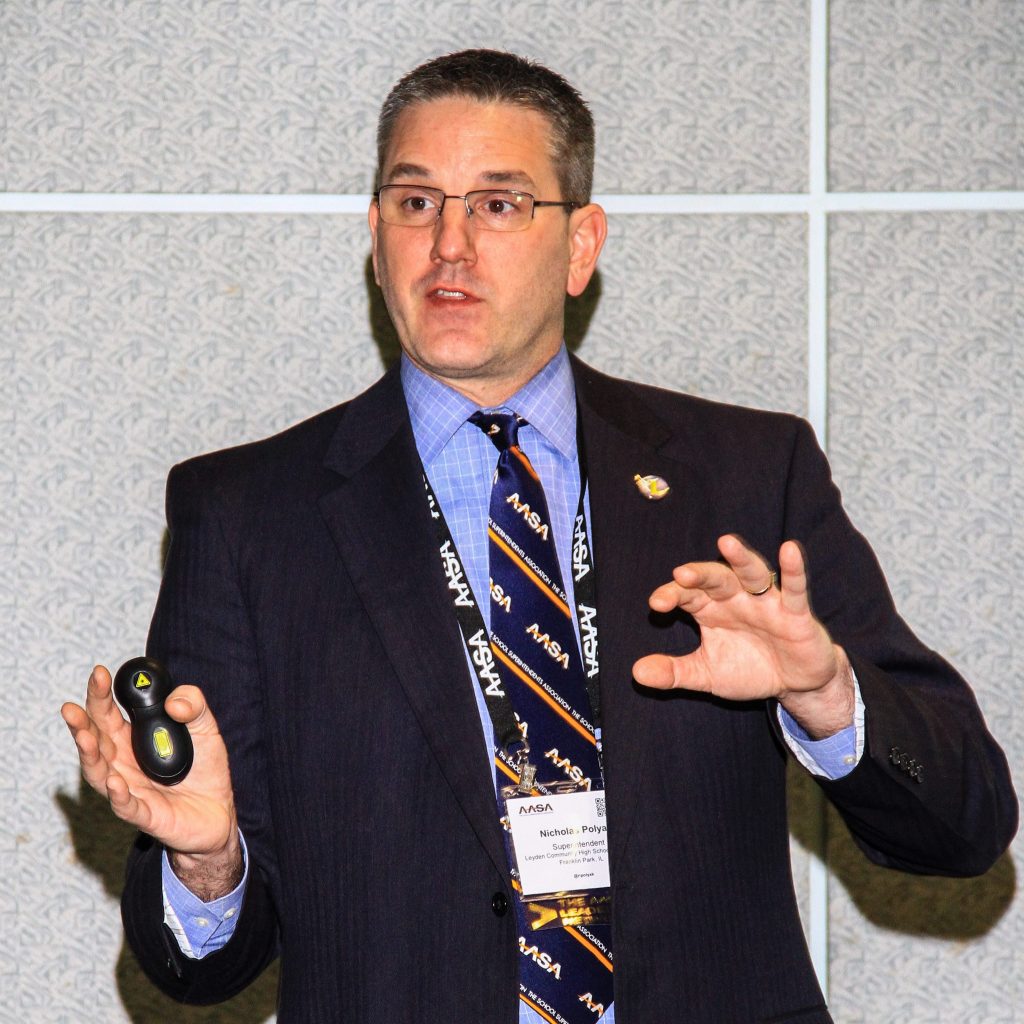“What would two superintendents know about student voice?”
That was what Michael Lubelfeld, superintendent of the North Shore School District 112 in Highland Park, Ill., and Nick Polyak, superintendent of the Leyden School District 212 in Franklin Park, Ill., were asked when they first pitched their book Student Voice: From Invisible to Invaluable to a publisher.
At an AASA conference session on Saturday, Lubelfeld and Polyak sought to answer that question by finding student voices in four aspects of their work as leaders of public school districts: (1) governance, service and character education; (2) technology instruction; (3) design and communication; and (4) equity and evaluation.
According to a 2012 Gallup survey of more than 500,000 students of all ages in public schools, students’ engagement drops as they spend more time in the education system. Engagement levels decrease from 76 percent in elementary school to 44 percent in high school.
To counter this issue, Polyak invited students to join his district’s board of education as non-voting members. “The students have become the voice of the constituency that we serve,” he said.
Lubelfeld also shared his experience of receiving feedback from students. When his school district was undergoing renovation, students contributed ideas for modernized classroom designs and an improved learning space.
A high school in Polyak’s school district implemented a bilingual theater program to provide equal opportunity for students transitioning into English.
“One of our students found her voice simply because we provided her an opportunity in her actual spoken voice in Spanish,” Polyak said. “As a white male superintendent of a largely low-income, multilingual, multicultural school district, that’s about as heartwarming of a moment I can have.”
Allowing students to voice their opinions provides school staff, faculty and administration with a mindset for change, according to the two superintendents, both based in the suburbs of Chicago.
“The thing is, it’s not a hard concept,” Polyak said. “These schools were not built for the adults. Nobody built them for us. We built them for the kids. They’re theirs, so we should incorporate them in.”
(Sarah Aie is a junior at Walnut High School in Walnut, Calif. and an intern with AASA’s Conference Daily Online.)


